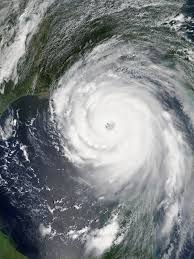Hurricane Katrina: A Deep Dive into Its Legacy

Introduction
Hurricane Katrina, which struck in August 2005, remains a pivotal moment in United States history. The catastrophic storm not only caused unprecedented destruction in New Orleans but also revealed significant flaws in disaster preparedness and response strategies. As we reflect on the 18 years since the hurricane, it is crucial to understand its lasting impact on urban planning, emergency services, and community resilience.
The Devastation of Hurricane Katrina
On August 29, 2005, Hurricane Katrina made landfall as a Category 5 hurricane, causing catastrophic flooding when levees failed in New Orleans. An estimated 1,800 lives were lost, and many residents were displaced. More than 80% of New Orleans was submerged, leading to extensive damage to infrastructure, homes, and businesses.
In the aftermath, the Federal Emergency Management Agency (FEMA) faced significant criticism for its slow response, highlighting the need for a reevaluation of emergency management. The storm’s aftermath left over a million people homeless and displaced, with many struggling for years to return home.
Lessons Learned
The devastation prompted a national conversation on disaster preparedness. Legislators and emergency management officials began to reassess response strategies. The introduction of the Post-Katrina Emergency Management Reform Act aimed to improve coordination among federal, state, and local government agencies.
Additionally, the rebuilding efforts initiated a shift in urban planning, emphasizing resilient infrastructure. Cities nationwide are adopting lessons from New Orleans to create disaster-resistant environments, including improved levee systems and emergency response protocols.
Ongoing Challenges
Even almost two decades later, the legacy of Hurricane Katrina continues to impact the region. Many neighbourhoods still struggle with poverty, displacement, and slow recovery. The storm acted as a catalyst, exposing systemic inequalities in vulnerable communities that were disproportionately affected.
Moreover, climate change poses an ongoing threat to coastal cities. Increased frequency and intensity of storms raise concerns for future hurricanes, prompting cities like New Orleans to invest in advanced forecasting, evacuation planning, and climate adaptation measures.
Conclusion
The long shadow of Hurricane Katrina serves as a reminder of the importance of effective disaster preparedness and recovery. As communities reflect on the lessons learned, they remain committed to rebuilding with resilience in mind. The significance of this historic hurricane continues to influence policies and urban planning strategies, shaping a more adaptable future for vulnerable regions.









